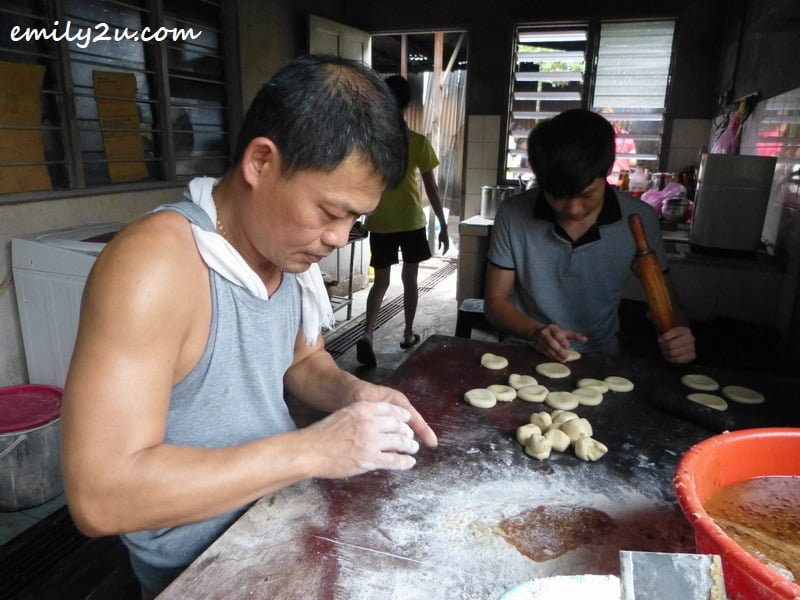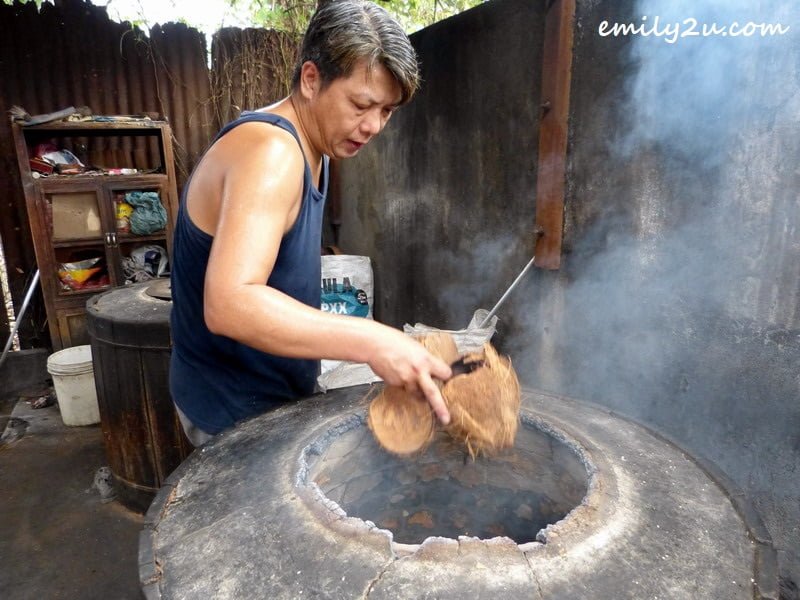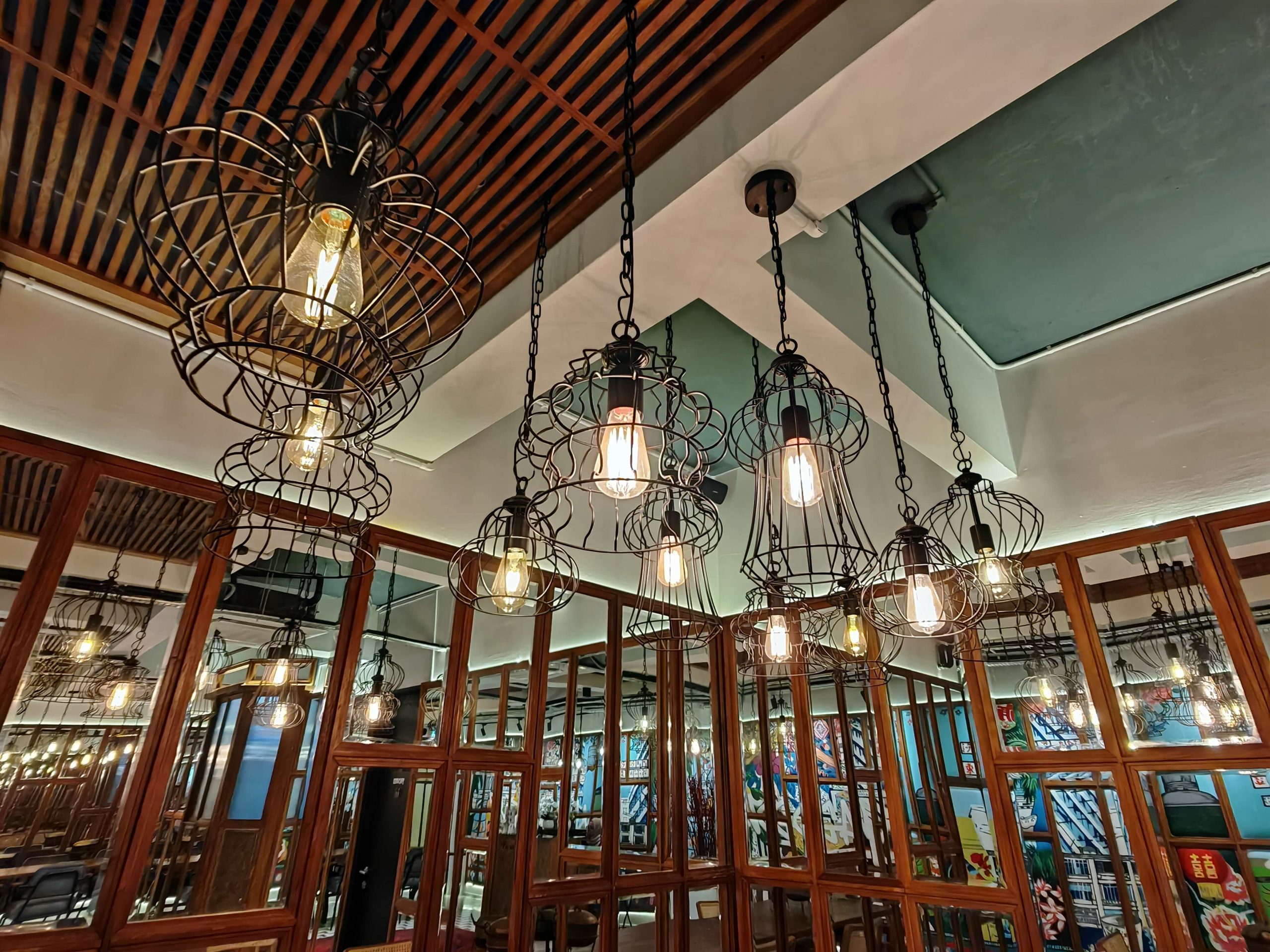Taste of The Old Days
A whiff of sweet aroma greets visitors even before they step foot into this new village house at number 177, Lorong 3 in Gunung Rapat, Ipoh, Perak.
As one of only two heong peah (or fragrant biscuit in English) manufacturers still using traditional coconut shell charcoal-fired ovens in Ipoh, possibly even in Malaysia, Seng Kee Food Trading serves a stream of customers daily, mainly from outstation as far south as Singapore.
According to owner Teoh Seng Kwok, 47, this family business was only established in the early 1990s upon his return from England.
He said, “I spent four years working in a restaurant there and with my savings, decided to start this cottage business with my mother, Chew Yoke Kim. She was working for another heong peah manufacturer in the neighbourhood, and I had already learned the art when I was in my late teens. At the time, it seemed like a pretty good idea to start our own business, albeit a modest one.

“My two brothers and three sisters also helped out and we baked almost 400 biscuits daily using our two traditional ovens. Demand was so good we added two more ovens in our compound three years later.
“Those days, we were able to engage quite a number of workers to help in preparing the dough and baking them. Over the years, it has become difficult as people seek a more comfortable working environment. My mother has retired while my siblings have sought greener pastures. Even my children, aged 15 and 19 years, have refused to have anything to do with heong peah!”
While most manufacturers have mechanised their production, heong peah lovers who know their fragrant biscuits will only seek out those that are traditionally-baked. And there’s a reason to it.

Shared Teoh, “Coconut shell-broiled heong peah are richer in their aroma. Besides, they are crispier and flakier. However, these traditionally-baked heong peah are not as perfectly rounded as machine-baked biscuits as they are subjected to the pull of gravity while stuck to the side walls of the oven while being broiled.”
For Teoh, whose day starts at 6am beginning with the preparation of the dough from wheat flour and cooking of the maltose filling with sesame seed, onion, sugar and oil, putting in 12 hours of work daily is the norm. Aided by his very able wife Chuah Lee Hoon and brother-in-law Liew Yoke Choon who is in-charge of the four ovens, they can produce some 2,000 biscuits per day.

The technique of producing heong peah good enough for sale in terms of taste and look lies in the custom-made oven and the control of its temperature. Indeed, the importance of the plank-covered oven with a clay pot core measuring 37 inches in height and 32 inches in diameter shouldn’t be underestimated.
Liew would pre-heat the oven with the fire from coconut shells that are procured from the nearby Gunung Rapat wet market, until a desired temperature is achieved. He then fishes out the shells and proceeds to sprinkle the inner wall of the oven with water.
Then, he wets one side of the flattened dough and pastes them in circular lines inside the oven. Each oven can accommodate about 150 pieces of dough. Once that is done, he places the coconut shell burning charcoal into the oven. Even before Liew covers the oven with its lid, the dough begins to rise due to the expansion of the maltose filling from the heat.

Although Liew checks on his pastries off and on, he would only harvest them after about fifteen minutes. By then, the biscuits have already turned golden brown. Harvesting them is an art by itself as Liew is careful not to break the biscuits as they are scrapped off from the wall of the oven.

Explaining the science behind using coconut shells to fuel the oven, Liew said, “The fire from coconut shells is very strong and once the shells turn to charcoal, the heat can be retained for a longer time. Moreover, compared to wood, they are clean. Without sparks, they do not produce charcoal ash, which would affect the quality of the biscuits.
“We are very careful with quality. Therefore, we also specially order heat-resistant bags to pack the biscuits for our customers. Hot off the oven, heong peah should only be served after about one hour to allow them time to cool down significantly.”

Despite working almost round the clock, demand has outstripped supply at Seng Kee Food Trading. The realistic Teoh is contemplating upgrading to electric ovens too to cope with demand. In the meantime, let’s enjoy these coconut shell-broiled heong peah while they last!
Note: An edited version of this article [Taste of the old days] was published on 1st August, 2015, in The Malay Mail.
Note: View larger images by clicking on an image once this page has completely loaded. Then navigate by clicking on the right or left side of image.


















